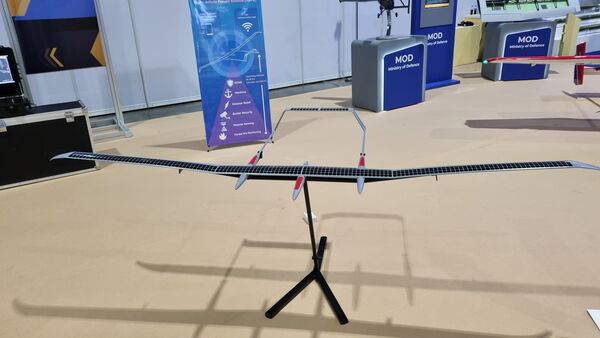
A scale model of the M-Pseudo SAT concept by the Royal Thai Air Force Academy is displayed at the Defense & Security 2022 show in Bangkok. (Janes/Amit Kalra)
The Royal Thai Air Force Academy (RTAFA) unveiled the ‘M-Pseudo SAT' concept at the Defense & Security 2022 show in Bangkok on 29 August.
The M-Pseudo SAT is a high-altitude pseudo-satellite (HAPS) system, powered by solar energy, and designed to fly in the upper stratosphere at an altitude of 15–18 km.
RTAFA officials told Janes that the M-Pseudo SAT is being designed for communication relay and restoring mobile connectivity during any disaster. Further, the platform can conduct intelligence, surveillance, target acquisition, and reconnaissance (ISTAR) roles, maritime surveillance, disaster relief, border patrolling, remote sensing, and forest fire prevention applications.
The RTAFA officials said that design work of the system is an in-house effort that began in 2021. The first half-scale prototype is planned for roll out in 2023. The requisite tests and flight programme to mature the platform will take at least five years, the officials said.
The final prototype of the M-Pseudo SAT will be 8 m in length, and will have a wingspan of 25 m with a listed flight endurance of up to 14 days. The solar energy harnessed by the solar arrays positioned at the top of the wingspan will be stored in a 12-cell battery, which in turn will power two electrical motors, fitted to the leading edge of the wing.
With a maximum take-off weight of 75 kg and a payload weight of 5 kg, the aircraft will be able to climb an altitude of a maximum of 20 km while attaining a cruising speed of 55–70 km/h.
Looking to read the full article?
Gain unlimited access to Janes news and more...







